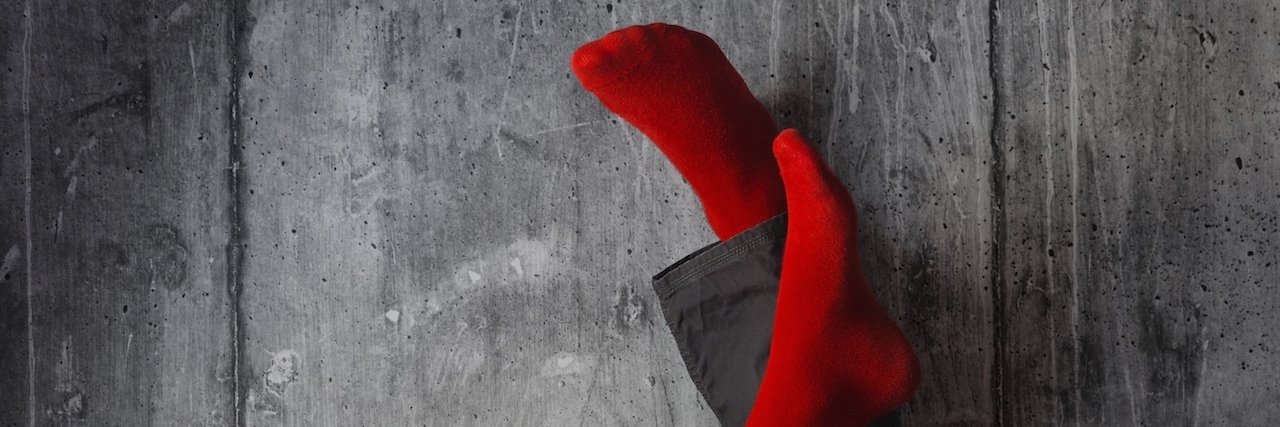The room: gray. Our clothing: a mixture of white and black, washed-out pastels and pajamas. Our feet: red. Fifteen pairs of red socks were a shocking reminder that this wasn’t Oz, and I didn’t possess ruby slippers, but that I was a former New York girl in a Florida behavioral health ward.
Behavioral health wards or psych wards, as they’re known in the vernacular, conjure up thoughts of “One Flew Over the Cuckoo’s Nest” — straitjackets, large needles and cold-hearted nurses.
However, this is far from the truth. Sadness. Tears. Hopelessness. Tissues scattered everywhere. Blankets wrapped around each individual because the temperature is kept slightly above refrigerator levels. Empathetic and sympathetic staff members. And socks — bright red socks.
There are more restrictions than exemptions in behavioral health wards. Everything from no hair dryers and pants with strings to anything that requires electricity or batteries (yes, that meant no phones or music). Shoes are considered contraband, so everyone is administered bright red, knee-high socks with skids on the bottom similar to what a toddler would wear. They were oddly comfortable and shockingly unifying.
In the therapy room, waiting to be evaluated by a social worker and psychiatrist, there were people detoxing from alcohol, heroin, crack and opiates. There were young women who cut themselves and more attempted suicide and self-harm patients than I can remember. But there we were — all together as a family. It didn’t matter that I was suffering “just anxiety and depression.” We were equals.
Prior to my red-sock excursion, I had never met an addict. I had never really understood cutting. I had never seen someone with stitches on their wrist. I wasn’t “like” them. I had a master’s degree and a family. My social circle consisted of some of the most philanthropic members of my community, but on this day in February, I was no different from them. In fact, I was exactly like them in that I found my purpose in life. I found a new family and a new community — one that very rarely receives the opportunity for forgiveness or a second chance. I was surrounded by people who wanted to get better, to feel better and who had mental illnesses but were truly loving, supportive and good souls.
Not many people can say they found their purpose in a psych ward. But I can and I learned you can have a master’s and a lovely home or struggle with addiction, and it doesn’t matter. Mental illness is mental illness, and it doesn’t discriminate. In that room, we were one. We were all scared, worried, nervous and destitute. Yet, we had each other. Camaraderie, understanding and compassion were what we needed to heal, and that’s what I found there.
Those red socks made were our uniform. Red was the first spark of brightness we saw in that room full of despair. Although my stay was brief, I think of my red-sock family often, hoping they’re OK and praying they’re safe and getting well. I know they think of me. They are my inspiration and motivation to continue my mental health advocacy work and education.
If you or someone you know needs help, please visit the National Suicide Prevention Lifeline. You can also reach the Crisis Text Line by texting “START” to 741-741. Head here for a list of crisis centers around the world.
The Crisis Text Line is looking for volunteers! If you’re interesting in becoming a Crisis Counselor, you can learn more information here.

